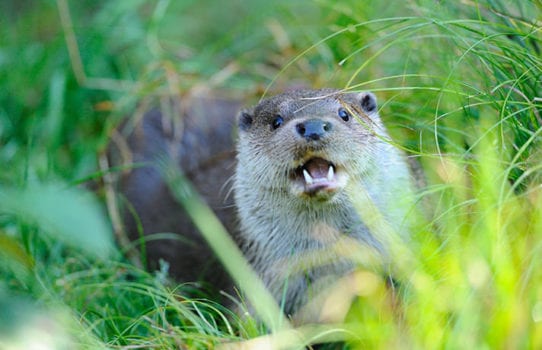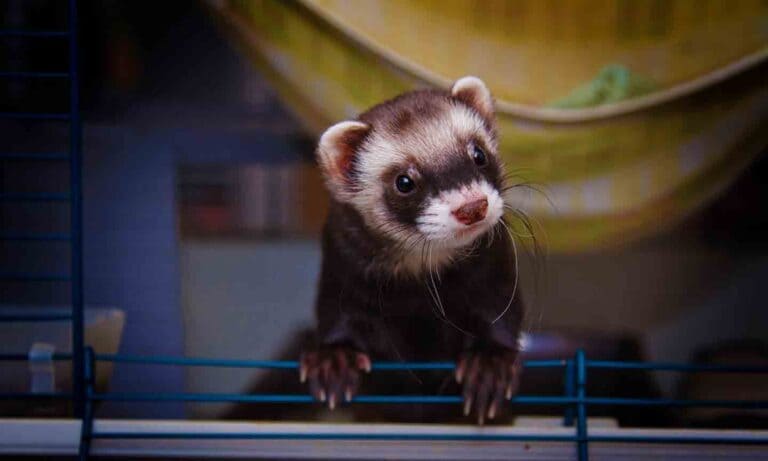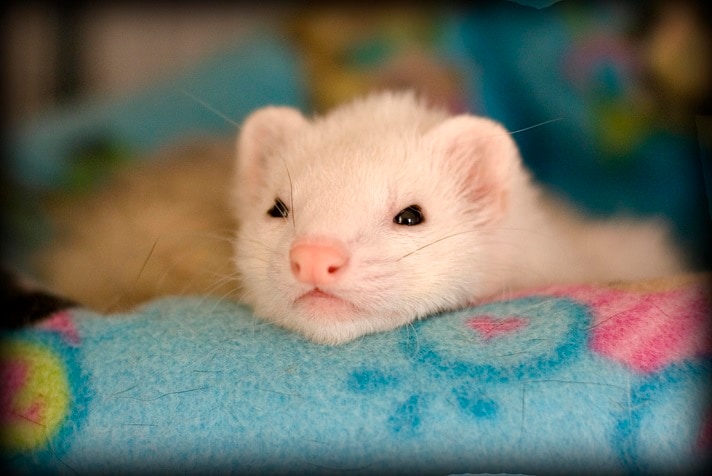At least once a year, the Ferret Association Of Connecticut, the ferret rescue that I co-founded, gets an excited caller thinking they’ve seen a “wild ferret” in their yard. There’s no such thing! But there are a LOT of ferret-like animals around the world. Depending on where you live, you might come across one of these lookalikes.
There are about 57 species of mustelids, the scientific classification that includes ferrets. It’s no surprise they get confusing! Let’s start with a guide to what is — and isn’t — a member of the Mustelidae family tree.
What All Mustelids Have in Common
All mustelids are warm-blooded, carnivorous mammals with long, tubular bodies, short legs and thick necks. Nearly all have well-developed anal scent glands. Indigenous weasels and their kinfolk live all over the world except in in Australia, Antarctica, Madagascar and some ocean islands.
The mustelid family is known for intelligence and being fierce predators, willing to brave animals much larger and stronger. An early mammal, they began to evolve into today’s species about 15 million years ago. Overall, they are a very successful group.
Their sizes range from the least weasel, as small as 5 inches long and weighing only a couple of ounces; to the South American giant otter, which weighs up to 75 pounds and is more than 5 feet long; to sea otters, not quite as long but up to 100 pounds.
The Following Are Mustelids
- Otters – river and sea
- Badgers
- Mink
- Weasels
- Martens
- Fishers
- Polecats
- Wolverine
- Ferret (the only domestic mustelid)
The Following Are NOT Mustelids
- Mongoose, including dwarf mongoose and meerkats. While they also have anal scent glands and are similarly shaped, the 34 members of the Herpestidae family are native to Africa, southern Asia and southern Europe.
- Skunks! In recent years, they were officially classified as Mephitidae. Most of the 13 different species range from Canada to the northern parts of South America. They, of course, have the most developed scent glands of all!
- Civets (aka civet cats) and fossas (known from the “Madagascar” animated films) are Viverrids of the family Viverridae. They are native to dense forests of Africa, Asia and some islands.
Changing Terminology Can Cause Name Confusion
There’s a lot of loose terminology between animals, mostly dating back to the 1800s and 1900s before modern scientific classification and DNA testing. Therefore, you might hear skunks also called polecats. The black-footed ferret is actually a type of polecat, not a ferret. Short-tailed weasels may be called stoats and, in their white winter coat, ermine.
While some of the polecat species are capable of interbreeding, the only mustelid capable of interbreeding with domestic ferrets are European polecats. They even share their scientific names, Mustela putorius (polecat) and Mustela putorius furo (domestic ferret).
Black-footed ferrets are an endangered species with only a few hundred left in the wild. Conservation efforts have reintroduced them to only a few areas of western U.S. prairie.
What Are People Seeing in Their Yards?
Most of the time, it’s a lost or abandoned domestic ferret. Ferrets see humans as their rescuer from a scary outdoor world and often run right up to them. But some wildlife can be mistaken for ferrets.
It’s unlikely you will encounter the endangered black-footed ferret — they’re only on western prairies where they’ve been deliberately released. If you would like the chance to see one, the Arizona Game And Fish Department holds an annual spring and fall black-footed ferret count where volunteers are welcome.
Sea Otters
Sea otters are quite a bit larger than pet ferrets. Wild sea otters live in the Pacific Ocean.
Sea otters are much bigger than ferrets and can be spotted off the western United States coastline. They can come ashore, but prefer to float on their back in the swells. One great way to see them is on a specialized wildlife boat tour, available from Monterey to Alaska. River otters will, as their name suggests, be found along rivers and waterways. Also much bigger than ferrets, the main similarity you may notice is their love of play. YouTube videos show river otters sledding across snow or down riverbanks.
Badgers
Badgers have a much rounder body than the slinky ferret. This badger photo was taken at the Omaha Zoo.
Badgers have distinctly elongated snouts and a rounder, pudgier body than most mustelids. Different subspecies of badgers live in the Americas, Europe, Africa, Japan and parts of Asia. All badgers live in burrows. People might seek out badgers, as their fur is used in fine shaving brushes and they’re a part of Russian cuisine. In the United Kingdom, however, while they are an iconic creature featured in tales and stories, they are a carrier of bovine tuberculosis and badger culls remain controversial.
Fishers and Wolverines
Fisher or wolverine? If either of these visit your property, stay indoors! These predators avoid humans but may chase rodents or small prey into outbuildings or woodpiles. Fishers have been reported to attack children, and wolverines can take down a deer or lynx. Not animals to mess with!
The various weasel species are rarely seen. Small and smart, they avoid big, lumbering humans. If your home abuts woodlands, however, you might find one that’s fallen into a pool or basement window well. The Wildlife Rehabilitation Information Directory has links to state-by-state rehabilitator lists.
Martens
Good tree-climbers, martens (including the closely related sable in Eastern Europe, Russia and northern China, and the Japanese Marten) frequently have lighter fur beneath their chin of white, gray or yellow. In Central Europe, they have such a pesky inclination to munch on rubbery auto parts that you can buy marten damage insurance for cars!
The wild mustelid humans most commonly encounter are mink. There are two types: European (or Russian) and American mink. Despite the names, they are not closely related. European mink are closer to polecats and are an endangered animal.
American Minks
American mink are widely farmed for fur production. An opportunistic, adaptable species, they were introduced by humans to South America, England and Europe. Invariably, some escaped and in Europe they are considered invasive — pushing out natives like European mink and polecats. While similar in size to a ferret, their natural color is a deep, solid brown. (Ferrets have differently colored guard hairs than their base coat, giving them a mottled look.) Mink often have a white chin and/or a spot of white on their neck. If you see a mink that is gray, silver or spotted, it is probably a fur farm escapee.
While you might find animal dealers selling mink or come across one rescued from a fur farm, these animals retain a great deal of wild instinct and are not suitable as pets without dedicated, educated care. A permit or license may be required to keep one.
Mink are usually seen in early summer, when youngsters leave their dens to establish their own territories. They live near water: You might spot one along a coastline, stream or pond. If you live on a lake and put out meat or cat food for feral cats, don’t be surprised if a resourceful mink visits for an easy meal. One big difference will be that a mink will snatch food and race off — a lost ferret may try to follow you indoors!
The mustelid family is beautiful, diverse and widespread. If you are fortunate enough to see one of these wild, wonderful ferret relatives, enjoy the privilege and appreciate the ability to keep their only domestic member as part of your own family.
By: L. Vanessa Gruden
Featured Image: David & Micha Sheldon/iStock/Thinkstock
Share:









